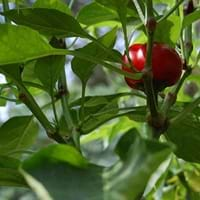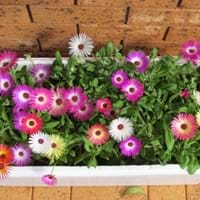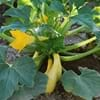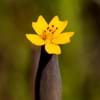Life Span
Perennial
Annual
Type
Vegetable
Flowering Plants
Origin
Mexico, Central America, South America
South Africa
Types
Not Available
it is a type of daisy
Habitat
Temperate Regions
Humid climates, Warmer regions
USDA Hardiness Zone
5-12
Not Available
Sunset Zone
A1, A2, A3, H1, H2, 1a, 1b, 2a, 2b, 3a, 3b, 4, 5, 6, 7, 8, 9, 10, 11, 12, 13, 14, 15, 16, 17, 18, 19, 20, 21, 22, 23, 24
A2, 1a, 1b, 2a, 2b, 3a, 3b, 4, 5, 6, 7, 8, 9, 10, 11, 12, 13, 14, 15, 16, 17, 18, 19, 20, 21, 22, 23, 24
Habit
Oval or Rounded
Prostrate/Trailing
Flower Color Modifier
Bicolor
Bicolor
Fruit Color
Red, Green
Brown
Leaf Color in Spring
Sea Green
White, Lime Green, Ivory
Leaf Color in Summer
Dark Green
White, Lime Green, Ivory
Leaf Color in Fall
Dark Green, Black
White, Lime Green, Ivory
Leaf Color in Winter
Green
Light Green
Leaf Shape
Lanceolate
Long Linear
Plant Season
Spring, Summer, Fall
Spring, Summer, Fall, Winter
Sunlight
Full Sun
Full Sun, Partial Sun, Partial shade
Type of Soil
Loam
Loam, Sand
The pH of Soil
Neutral
Acidic, Neutral, Alkaline
Soil Drainage
Well drained
Well drained
Bloom Time
Indeterminate
Spring, Late Spring, Early Summer, Early Fall, Fall, Late Fall, Early Winter
Tolerances
Drought
Drought
Where to Plant?
Container, Ground, Pot
Container, Ground, Pot
How to Plant?
Seedlings
Seedlings
Plant Maintenance
Medium
Medium
Watering Requirements
Average Water Needs, Do Not over Water
Requires regular watering
In Summer
Lots of watering
Ample Water
In Spring
Moderate
Average Water
In Winter
Average Water
Average Water, Ample Water
Soil pH
Neutral
Neutral, Slightly Acidic
Soil Type
Loam
Loam, Sand
Soil Drainage Capacity
Well drained
Well drained
Sun Exposure
Full Sun
Full Sun, Partial shade, Partial Sun
Pruning
Remove damaged leaves, Remove dead branches, Remove dead leaves
No pruning needed
Fertilizers
All-Purpose Liquid Fertilizer
All-Purpose Liquid Fertilizer
Pests and Diseases
Aphids, Armyworm, Borers, Red blotch, Stink bugs, Worms
Not Available
Plant Tolerance
Drought, Salt
Drought
Flowers
Insignificant
Showy
Flower Petal Number
Single
Single
Foliage Texture
Medium
Medium
Foliage Sheen
Glossy
Glossy
Attracts
Aphids, Beetles
Not Available
Allergy
Eye irritation, Skin irritation
Not Available
Aesthetic Uses
Beautification, Showy Purposes
Beautification, Showy Purposes
Beauty Benefits
Not Available
Not Available
Environmental Uses
Air purification
Air purification
Medicinal Uses
Vitamin A, Vitamin C
No Medicinal Use
Part of Plant Used
Fruits
Flowers
Other Uses
Used as a nutritious food item, Used for its medicinal properties
Used as Ornamental plant
Used As Indoor Plant
Yes
No
Used As Outdoor Plant
Yes
Yes
Garden Design
Container, Edible, Herb / Vegetable, Tropical
Bedding Plant, Groundcover
Botanical Name
CAPSICUM annuum 'Cherry Pick'
DOROTHEANTHUS bellidiformis
Common Name
Cherry Pepper, Cherry Pick Pepper
Livingstone Daisy, Mezoo Trailing Red Livingstone Daisy
In Hindi
चेरी मिर्च
Livingstone Daisy
In German
Kirsche Pfeffer
Livingstone Daisy
In French
cerise Pepper
Livingstone daisy
In Spanish
cereza de la pimienta
Livingstone daisy
In Greek
Cherry πιπέρι
Λίβινγκστον μαργαρίτα
In Portuguese
cereja pimenta
Livingstone daisy
In Polish
Cherry Pieprz
Livingstone daisy
In Latin
Cherry Pepper
Livingstone primula
Phylum
Magnoliophyta
Not Available
Class
Magnoliopsida
Not Available
Order
Solanales
Caryophyllales
Family
Solanaceae
Aizoaceae
Genus
Capsicum
Dorotheanthus
Clade
Asterids, Eudicots
Angiosperms, Core eudicots, Eudicots
Tribe
Capsiceae
Not Available
Subfamily
Not Available
Ruschioideae
Number of Species
Not Available
Not Available
Season and Care of Cherry Pepper and Livingstone Daisy
Season and care of Cherry Pepper and Livingstone Daisy is important to know. While considering everything about Cherry Pepper and Livingstone Daisy Care, growing season is an essential factor. Cherry Pepper season is Spring, Summer and Fall and Livingstone Daisy season is Spring, Summer and Fall. The type of soil for Cherry Pepper is Loam and for Livingstone Daisy is Loam, Sand while the PH of soil for Cherry Pepper is Neutral and for Livingstone Daisy is Acidic, Neutral, Alkaline.
Cherry Pepper and Livingstone Daisy Physical Information
Cherry Pepper and Livingstone Daisy physical information is very important for comparison. Cherry Pepper height is 45.70 cm and width 40.60 cm whereas Livingstone Daisy height is 20.30 cm and width 25.40 cm. The color specification of Cherry Pepper and Livingstone Daisy are as follows:
Cherry Pepper flower color: White
Cherry Pepper leaf color: Sea Green
Livingstone Daisy flower color: Red
- Livingstone Daisy leaf color: White, Lime Green and Ivory
Care of Cherry Pepper and Livingstone Daisy
Care of Cherry Pepper and Livingstone Daisy include pruning, fertilizers, watering etc. Cherry Pepper pruning is done Remove damaged leaves, Remove dead branches and Remove dead leaves and Livingstone Daisy pruning is done No pruning needed. In summer Cherry Pepper needs Lots of watering and in winter, it needs Average Water. Whereas, in summer Livingstone Daisy needs Ample Water and in winter, it needs Average Water, Ample Water.





